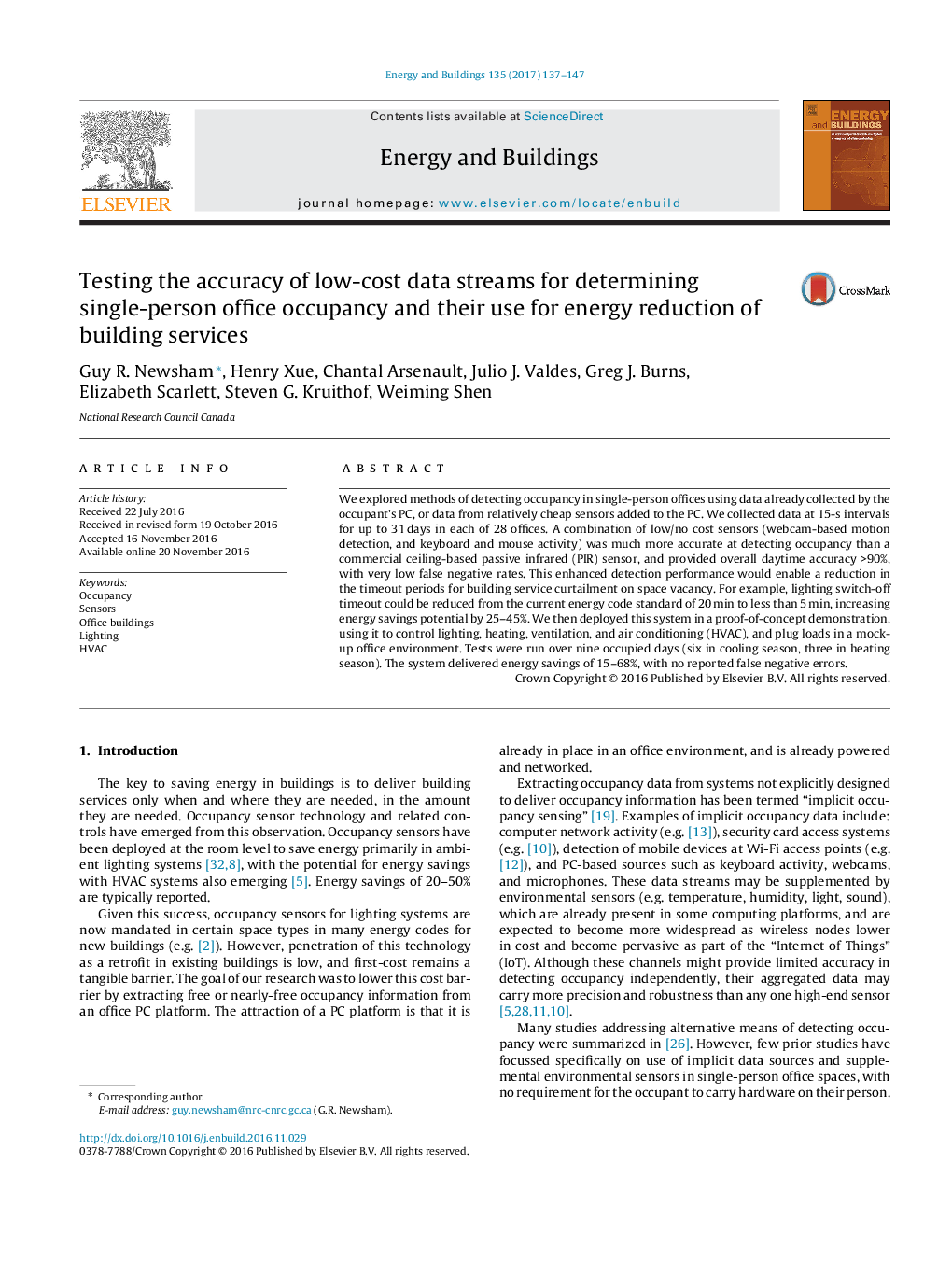| Article ID | Journal | Published Year | Pages | File Type |
|---|---|---|---|---|
| 4919386 | Energy and Buildings | 2017 | 11 Pages |
Abstract
We explored methods of detecting occupancy in single-person offices using data already collected by the occupant's PC, or data from relatively cheap sensors added to the PC. We collected data at 15-s intervals for up to 31âdays in each of 28 offices. A combination of low/no cost sensors (webcam-based motion detection, and keyboard and mouse activity) was much more accurate at detecting occupancy than a commercial ceiling-based passive infrared (PIR) sensor, and provided overall daytime accuracy >90%, with very low false negative rates. This enhanced detection performance would enable a reduction in the timeout periods for building service curtailment on space vacancy. For example, lighting switch-off timeout could be reduced from the current energy code standard of 20Â min to less than 5Â min, increasing energy savings potential by 25-45%. We then deployed this system in a proof-of-concept demonstration, using it to control lighting, heating, ventilation, and air conditioning (HVAC), and plug loads in a mock-up office environment. Tests were run over nine occupied days (six in cooling season, three in heating season). The system delivered energy savings of 15-68%, with no reported false negative errors.
Related Topics
Physical Sciences and Engineering
Energy
Renewable Energy, Sustainability and the Environment
Authors
Guy R. Newsham, Henry Xue, Chantal Arsenault, Julio J. Valdes, Greg J. Burns, Elizabeth Scarlett, Steven G. Kruithof, Weiming Shen,
